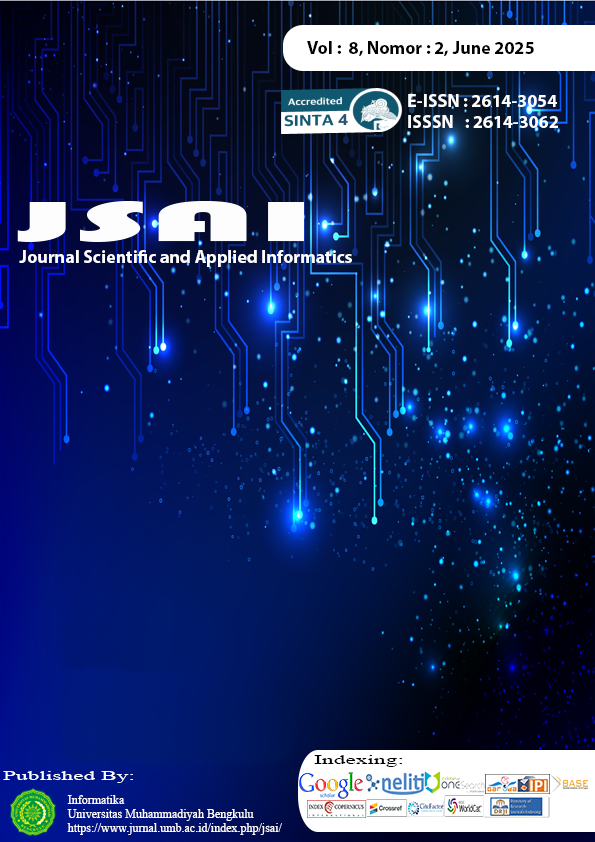NPK (Nitrogen, Phosporus and Potassium) Level Detection Tool in Palm Leaf Organic Fertilizer based on Internet of Things (IoT) using Soil NPK SensorIntegration of Multi-criteria Decision Making Methods for Tobacco Land Assessment: A Case Study Using SMART, TOPSIS, and AHP
DOI:
https://doi.org/10.36085/jsai.v8i2.8481Abstract
Significant decline in palm oil production; this is due to the termination of fertilizer subsidies and price increases, especially NPK fertilizers. To test the nitrogen (N), phosphorus (P), and potassium (K) content and water content in organic fertilizers made from oil palm leaves, cow dung, water, and other materials. Laboratory testing using chemical analysis and a composting process for 3 months is required. The results of the analysis of N content were 1.63%, P₂O₅ was 0.16%, K₂O was 0.12%, and water content was 12.71%. These results are in accordance with the quality standards of organic fertilizers. The implementation of the NPK content detection tool in oil palm leaves uses these results as a reference. Then the implementation is carried out directly at the location by taking samples of oil palm leaves, cow dung, and water, and then testing is carried out using an integrated NPK detection tool in real time. Where the test results are N = 97 mg/kg, P = 28 mg/kg, and K = 113 mg/kg, these values have not met the minimum threshold for organic fertilizer quality, so it is necessary to add other materials and incubate composting for 3 months or use EM-4 as a liquid that can help accelerate composting. The tool has an accuracy of ±2% and a resolution of up to 1 mg/kg, so the tool is suitable for use as a tool for detecting NPK levels.
Downloads
Published
Issue
Section
License
Copyright (c) 2025 Hesmi_Aria Yanti, Muhammad Alief Erfareta, Auliya Anggraeni, Alfarhad Maulana, Muhammad Ridho Hibatullah

This work is licensed under a Creative Commons Attribution-NonCommercial-NoDerivatives 4.0 International License.








